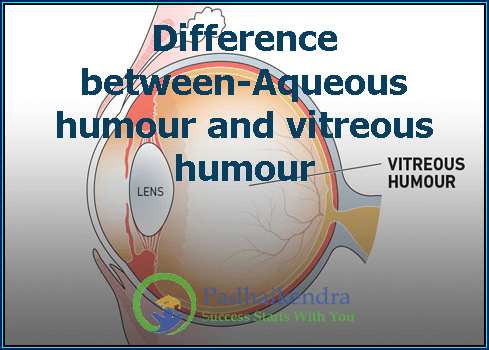Aqueous humour and vitreous humour are two clear fluids that fill different parts of the eye and serve different purposes.
Aqueous humour is a clear fluid that fills the front chamber of the eye, which is the space between the cornea and the lens. It is produced continuously by the ciliary body, a ring-shaped structure behind the iris, and drains out of the eye through the trabecular meshwork and the Schlemm’s canal. The aqueous humour helps to maintain the shape of the eye, provides nutrients and oxygen to the cornea and lens, and helps to remove waste products.
The vitreous humour is a clear, gel-like substance that fills the posterior chamber of the eye, which is the space behind the lens and in front of the retina. It is made up of water, collagen, and other proteins, and helps to maintain the shape of the eye, provide a cushion for the retina, and transmit light to the retina. The vitreous humour is more viscous and less fluid than the aqueous humour and does not drain out of the eye as the aqueous humour does.
In summary, aqueous humour and vitreous humor are two clear fluids that fill different parts of the eye and serve different purposes. The aqueous humour fills the front chamber of the eye, helps to maintain the shape of the eye, provides nutrients and oxygen to the cornea and lens, and drains out of the eye. The vitreous humour fills the posterior chamber of the eye, helps to maintain the shape of the eye, provides a cushion for the retina, and transmits light to the retina.





